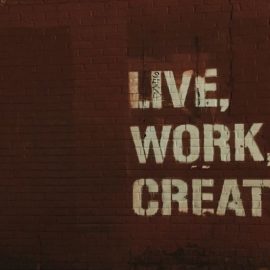

This article is an excerpt from the Shortform book guide to "Decisive" by Chip and Dan Heath. Shortform has the world's best summaries and analyses of books you should be reading.
Like this article? Sign up for a free trial here.
Why are people inclined to make decisions that perpetuate their status quo? What are some ways to mitigate the status quo bias in decision-making?
When it’s time to finally make a choice, our bias toward the status quo kicks in and weakens our judgment. According to Chip and Dan Heath, tough decisions elicit intense emotions. These emotions cause us to seek relief in what’s familiar. Thus, we make decisions that resist change, even if change is what we need.
Here’s how to push against the status quo bias in decision-making.
Overcoming Status Quo Bias
Tough decisions heighten our emotions, which compels us to avoid change. Our bias towards the status quo tempts us to choose whichever option minimizes loss and change.
To overcome status quo bias in decision-making, the authors argue that we shouldn’t disregard the current emotions that drive us to seek comfort in the status quo. Instead, we should put those emotions into perspective by looking outside ourselves and beyond the present.
| Mindfulness for Managing Emotions Research in psychology supports the authors’ claim that we shouldn’t disregard our emotions. In fact, doing so harms both our mental and physical health. One way to manage, rather than disregard, heightened emotions is to practice a well-known mindfulness technique called RAIN: Recognize: Acknowledge what you’re feeling by naming your emotions. Allow: Let yourself feel your emotions, and don’t try to change them. Investigate: Ask yourself where in your body you feel those emotions and why you might be feeling them. Non-Identification: Remember that your emotions are real, but they don’t define you. |
Strategy 1: Imagine What Someone Else Would Do
One strategy for putting your current emotions into perspective is to imagine the point of view of someone else who’s not experiencing the same strong emotions. The authors claim that this strategy allows you to more rationally and objectively see the decision’s important facets. You might then recognize the value of disrupting the status quo and seeking beneficial change. For any kind of decision, ask yourself, “If my friend or colleague was in this situation, what decision would they make, and why?”
(Shortform note: Since the release of Decisive, new research has suggested that we’re often wrong when we simply imagine what others think. For example, one study found that we better predict another person’s thoughts when we talk to them versus when we simply imagine what they think. However, there may still be benefits to imagining someone else’s perspective as a decision-making exercise, even if what we imagine is different from what they’d actually do. Recent research suggests that when we imagine someone else’s perspective, we improve our ability to generate creative and novel ideas.)
Strategy 2: Look Far Into the Future
A second way to put your emotions into perspective is to predict how you’ll feel about your decision at various points in the future. The authors state that we make better decisions when we give additional weight to our future feelings. When we consider how we’ll feel in the future, we’re more likely to welcome a change in the status quo.
One technique the authors recommend is the “10/10/10 test,” created by business writer Suzy Welch. First, select one of your options. Then, ask yourself, “If I chose this option, how would I feel about my decision 10 minutes, 10 months, and 10 years after I made it?” If you determine that you’d feel positively about that option at all three points in the future, it’s a strong option.
| Is it Possible to Accurately Predict Future Feelings? Experts have differing opinions about how accurately we can predict our future feelings. In Stumbling On Happiness, psychologist Daniel Gilbert argues that it’s futile to do this because your present emotions determine how you think you’ll feel in the future. He’d likely claim that a test like the 10/10/10 test will only reflect your current state of mind, rather than tell you something new about your future state of mind. However, whether or not it’s possible to accurately predict future feelings, Annie Duke, author of Thinking in Bets, argues that imagining the future can still positively impact decision-making. She claims that by remembering past decisions and imagining future outcomes, we better manage our emotions and make more rational decisions. She calls this strategy “mental time travel.” |
Strategy 3: Clarify Your Values
In some cases, it may not help to imagine someone else’s perspective or look far into the future. Even after trying these strategies, the decision may continue to be emotionally fraught. The authors share that when a decision is still emotionally fraught, it’s a sign that it may be a choice between one or more of your values. They claim that the best way to work through a decision that concerns multiple values is to clarify which of those values are most important to you.
| The Relationship Between Cultural Values and Decision-Making When clarifying your values, consider how the values that impact your decision may be culturally rooted. Research reveals that our cultural background influences whether we look inward or outward when we make emotionally fraught decisions. If your culture values individuality, you may make decisions by looking inward and determining your own wants and needs. By contrast, if your culture values collectivity, you may look outward and make choices based on what others expect of you. We can learn from both approaches. When you clarify your values for an emotionally-fraught decision, notice if you find yourself looking inward or outward. If this approach isn’t serving you, or if it isn’t helping you to manage your emotions and make a decision, consider taking the opposite approach. |
One value-clarifying technique that the authors recommend is a “stop doing list.” Business consultant Jim Collins created this technique.
- First, imagine receiving two phone calls: one telling you that you’ve been given 20 million dollars, and another sharing that you’ll die in 10 years.
- Next, ask yourself: What do you want to spend more time doing to make those last 10 years meaningful? What do you need to stop doing to make that possible?
- Finally, the Heath brothers add another step: Look at your schedule and remove everything you decided you want to stop doing. What you leave behind reflects what you value most, and what you cut reflects what you don’t value as much.

———End of Preview———
Like what you just read? Read the rest of the world's best book summary and analysis of Chip and Dan Heath's "Decisive" at Shortform.
Here's what you'll find in our full Decisive summary:
- Why our minds are wired to make bad decisions
- How biases and cognitive flaws distort your thinking
- A four-step process to improve your decision-making






